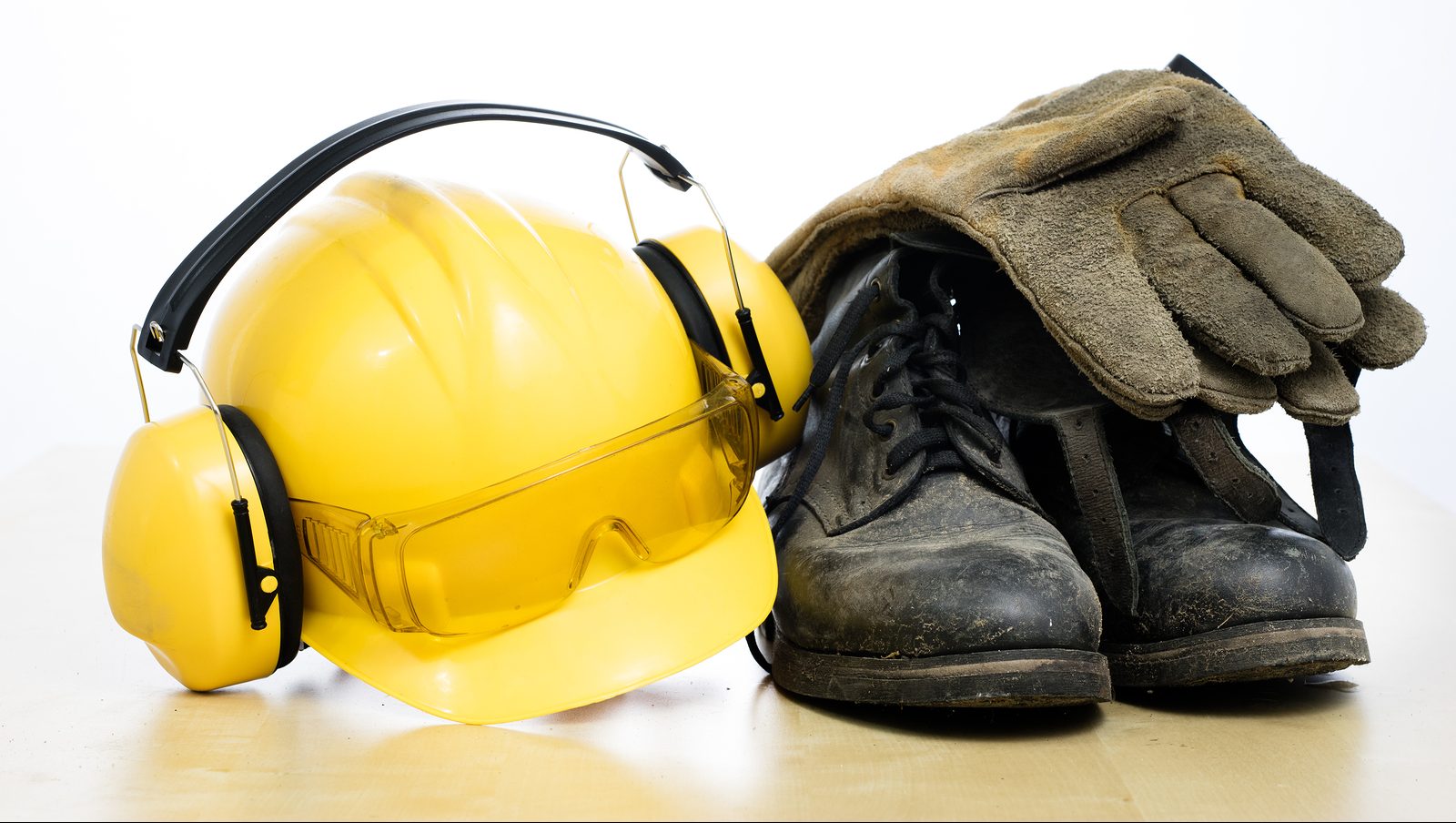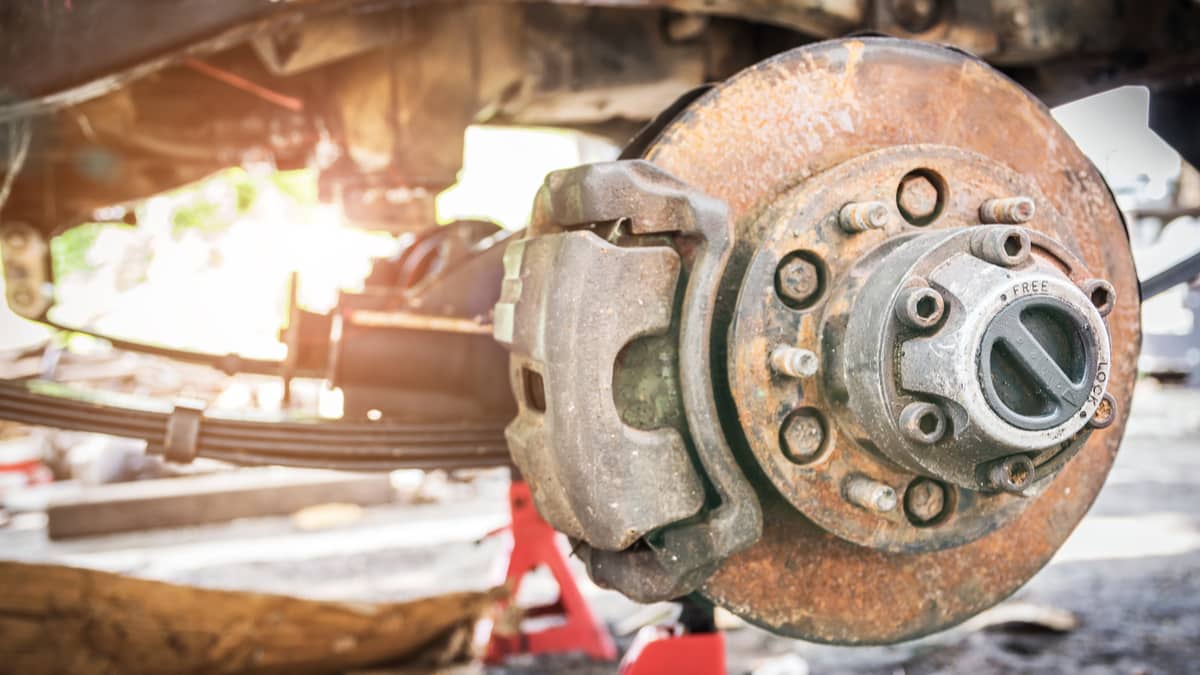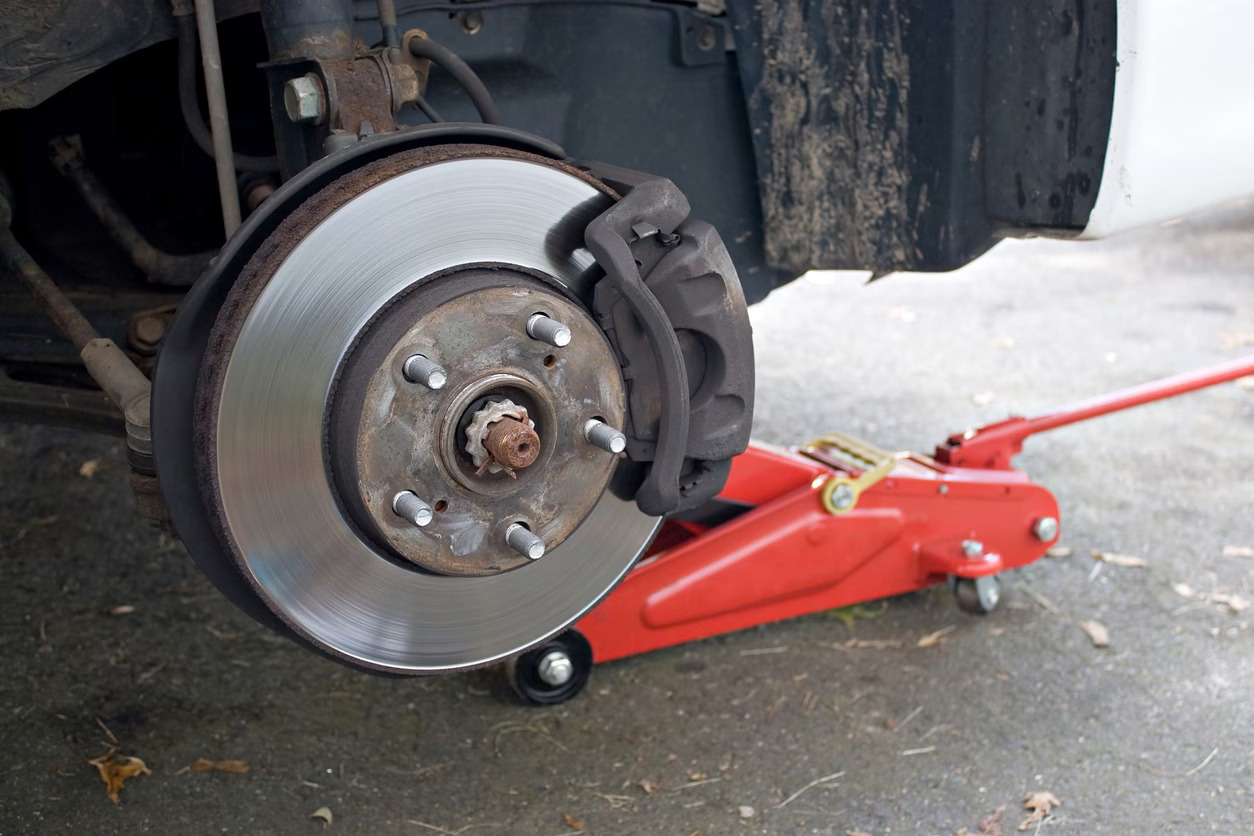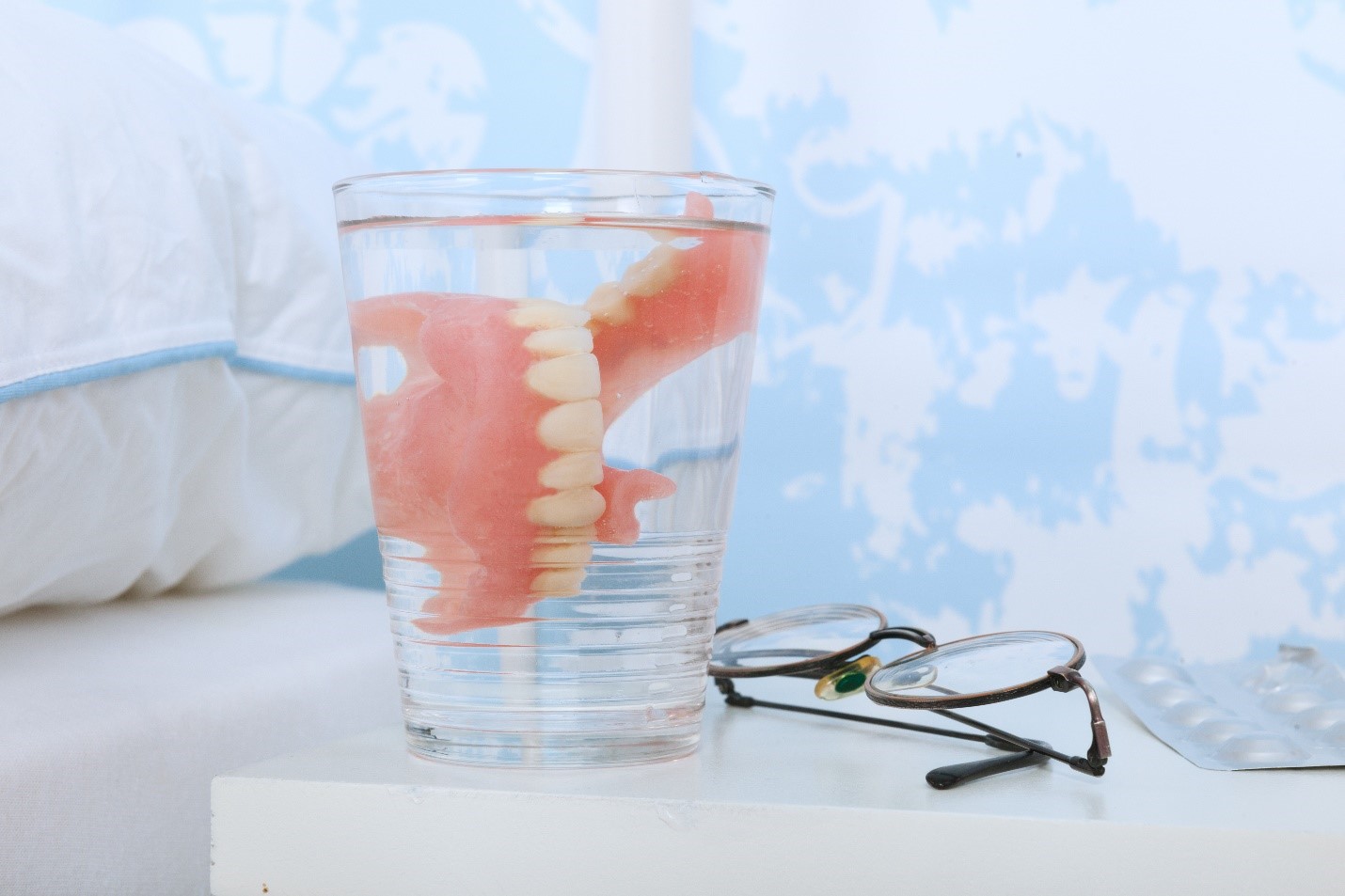Home>Home Maintenance>What To Wear When Doing Home Repair


Home Maintenance
What To Wear When Doing Home Repair
Modified: March 6, 2024
Discover the perfect attire for your home maintenance tasks. Find out what to wear when doing home repair to stay comfortable and protected throughout your projects.
(Many of the links in this article redirect to a specific reviewed product. Your purchase of these products through affiliate links helps to generate commission for Storables.com, at no extra cost. Learn more)
Introduction
When tackling home repairs and maintenance tasks, it’s important to prioritize not only functionality and efficiency but also safety. While you may have your tools and materials prepared, have you considered what you should wear during these projects? The right clothing can provide protection and comfort, making your home repair experience more enjoyable and safe.
In this article, we will explore the various considerations when it comes to choosing the right attire for home repair projects. From safety gear to footwear and everything in between, you’ll find helpful tips and recommendations to ensure you’re properly equipped from head to toe.
Key Takeaways:
- Prioritize safety by wearing durable clothing and personal protective equipment (PPE) like safety glasses and gloves to reduce the risk of accidents and injuries during home repair projects.
- Choose comfortable and functional attire, including closed-toe shoes or boots, to ensure stability and protection for your feet while working on home repair tasks.
Safety Considerations
Before delving into the specifics of what to wear during home repair tasks, it’s crucial to address the importance of safety. When working with tools, chemicals, or climbing ladders, there are inherent risks involved. By taking certain precautions and wearing appropriate attire, you can significantly reduce the likelihood of accidents or injuries.
One of the primary safety considerations is protecting yourself from potential hazards. This includes wearing clothing that can resist punctures, cuts, or abrasions. Opt for durable materials such as denim, heavy-duty cotton, or even specialized workwear designed for construction or maintenance tasks.
Additionally, it’s essential to choose clothing that fits properly. Loose or baggy attire can increase the risk of getting caught in machinery or tools. On the other hand, clothing that is too tight can restrict movement and hinder your ability to perform tasks effectively. Find a balance that allows for both comfort and freedom of movement.
Furthermore, consider the type of work you’ll be doing and the potential impact on your clothing. If you anticipate dealing with oil, chemicals, or paint, it’s wise to wear garments that are resistant to stains and easy to clean. This will not only extend the lifespan of your clothing but also prevent any hazardous substances from coming into contact with your skin.
Last but not least, always prioritize personal protective equipment (PPE). Depending on the nature of the task, this may include safety glasses, gloves, ear protection, and dust masks. PPE is designed to safeguard specific body parts and should be worn in addition to your regular attire. Be sure to familiarize yourself with the recommended PPE for each task and wear it accordingly to protect yourself from potential harm.
Choosing the Right Clothing
Now that we’ve covered the safety considerations, let’s delve into the specifics of choosing the right clothing for your home repair projects. The ideal attire should strike a balance between comfort, durability, and functionality.
First, consider the climate and weather conditions in which you’ll be working. If it’s hot and humid, choose lightweight and breathable fabrics that allow for airflow, such as cotton or moisture-wicking materials. On the other hand, if you’ll be working in colder temperatures, opt for layering options to regulate your body temperature and insulate against the cold.
Next, consider the range of motion required for your tasks. If you’ll be bending, stretching, or lifting heavy objects, choose clothing with flexible fabrics and ample room to move comfortably. Look for garments with stretch or elasticized panels, gussets, or articulated knees to allow for ease of movement. Avoid clothing made from stiff or rigid materials that impede your ability to perform tasks efficiently.
It’s also important to consider the functionality of your clothing. Look for garments with pockets or tool loops to conveniently store small items or tools you frequently need on hand. This can eliminate the need for constant trips back and forth to your tool belt or toolbox. Similarly, opt for clothing with reinforced knees, elbows, or durability in high-wear areas if you’ll be engaging in tasks that put added strain on these regions.
When it comes to color choices, consider the practicality. Neutral or darker colors, such as gray, brown, or navy, are less likely to show dirt, stains, or wear and tear. This can help prolong the lifespan of your clothing and reduce the need for frequent replacements.
Last but not least, choose clothing that is easy to clean and maintain. Home repair tasks can be messy, and having clothing that is machine-washable, stain-resistant, or quick-drying can save you time and effort in the long run. Avoid delicate fabrics or intricate designs that may be more challenging to clean or prone to damage.
By considering factors such as climate, range of motion, functionality, color, and ease of maintenance, you can choose the right clothing for your home repair projects, ensuring both comfort and practicality.
Footwear Options
One of the most critical aspects of your home repair attire is your footwear. The right shoes can provide stability, support, and protection for your feet, preventing common injuries and ensuring your comfort throughout the project.
When it comes to footwear options for home repair, prioritize safety and functionality above all else. Avoid open-toed or slip-on shoes that offer minimal protection and are prone to accidents. Instead, opt for closed-toe shoes or boots that provide adequate coverage for your feet.
Depending on the nature of the tasks you’ll be performing, you may choose from a variety of footwear options:
- Work Boots: Work boots are a popular choice for construction or heavy-duty repair projects. They offer excellent ankle support, a reinforced toe cap, and a sturdy sole for maximum safety and durability. Look for boots with slip-resistant soles to minimize the risk of falls, especially if you’ll be working on uneven surfaces or ladders.
- Safety Shoes: If your home repair projects involve working with heavy machinery, electrical tasks, or hazardous materials, investing in a pair of safety shoes is essential. These shoes have additional safety features, such as reinforced steel toe caps, puncture-resistant soles, and electrical hazard protection.
- Hiking Boots: For outdoor repair projects or tasks that require traversing uneven terrain, hiking boots can be an excellent choice. These boots offer ankle support, traction, and stability, making them ideal for projects such as landscaping, fence repairs, or working in the garden.
- Sneakers or Athletic Shoes: For lighter repair tasks or indoor projects that don’t involve heavy machinery or potential hazards, a comfortable pair of sneakers or athletic shoes may suffice. Look for shoes with a supportive sole and good traction to ensure stability and prevent slips or falls.
Regardless of the footwear option you choose, make sure they fit properly. Ill-fitting shoes can lead to discomfort, blisters, or foot fatigue, impeding your ability to work efficiently. Additionally, consider wearing moisture-wicking socks to keep your feet dry and comfortable throughout the project.
Remember, your footwear plays a crucial role in your safety and comfort during home repair tasks. Invest in high-quality shoes that offer the necessary protection and support for the specific tasks you’ll be undertaking.
Bottoms for Home Repair
When it comes to choosing the right bottoms for home repair projects, comfort, flexibility, and durability are key considerations. The right pair of pants can enhance your range of motion, protect your legs, and withstand the wear and tear associated with various tasks. Here are some options to consider:
- Work Pants: Work pants are specifically designed for rugged and physical tasks. Look for pants made from durable materials such as canvas or denim. These pants often have reinforced knees and double-stitched seams to withstand the demands of home repair projects. Additionally, work pants may feature convenient pockets for tools or accessories.
- Cargo Pants: Cargo pants are a popular choice for their practicality and versatility. These pants typically have multiple pockets, providing ample storage for tools, small equipment, or personal items. Cargo pants are usually made from durable fabrics that can withstand heavy use.
- Utility Shorts: For warmer weather or projects that require more freedom of movement, utility shorts can be a great option. They offer the same functionality and durability as work pants but with the added benefit of increased airflow and flexibility. Look for utility shorts with reinforced stitching and multiple pockets for convenience.
- Overalls: Overalls, also known as coveralls, offer full-body coverage and protection. They are particularly useful for messy projects or tasks that involve working on the ground or in tight spaces. Overalls are typically made from sturdy fabrics such as cotton or polyester and provide ample storage with multiple pockets.
Whichever bottoms you choose, ensure they fit properly and allow for easy movement without restricting your range of motion. Pants that are too loose or too tight can impede your ability to perform tasks effectively. Consider the fit around the waist, hips, and thighs.
Additionally, consider the potential hazards you may encounter during your home repair projects. If there is a risk of splattering paint, chemicals, or sparks, consider wearing flame-resistant or stain-resistant pants. For tasks that involve kneeling or working on rough surfaces, consider pants with reinforced knees or built-in knee pads for added comfort and protection.
Remember, the right pair of bottoms can make a significant difference in your comfort, mobility, and safety during home repair projects. Choose pants that are durable, functional, and well-suited to the specific tasks you’ll be undertaking.
Wear sturdy, closed-toe shoes to protect your feet from falling objects and sharp tools. Avoid loose clothing that can get caught in machinery.
Read more: What Do Construction Workers Wear
Tops for Home Repair
When it comes to choosing the right top for home repair projects, prioritizing comfort, flexibility, and protection is essential. The right shirt can help you stay cool, provide ease of movement, and guard against potential hazards. Here are some options to consider:
- Work Shirt: Work shirts are designed to withstand the demands of physical tasks. Look for shirts made from durable materials such as cotton or polyester blends. These shirts often feature reinforced stitching, double-layered sleeves, and functional pockets for small tools or accessories. Additionally, some work shirts have ventilation panels to enhance breathability and keep you cool.
- T-Shirt: A classic t-shirt can be a comfortable and versatile option for home repair projects. Choose t-shirts made from moisture-wicking fabrics to keep you cool and dry. Look for shirts with a relaxed fit and a bit of stretch for ease of movement. Consider opting for darker colors or those with patterns that are less likely to show stains or dirt.
- Long-Sleeve Shirt: For tasks that require added protection, such as working with chemicals, insulation, or rough surfaces, a long-sleeve shirt can provide coverage for your arms. Look for shirts made from durable and breathable materials such as cotton or lightweight performance fabrics. Consider shirts with adjustable cuffs or roll-up sleeves for flexibility.
- Flannel Shirt: Flannel shirts are a popular choice for their comfort, warmth, and ruggedness. Ideal for cooler weather or outdoor repair projects, flannel shirts are made from soft, brushed cotton fabric. They offer both insulation and protection from minor scrapes or scratches.
It’s important to choose tops that fit comfortably and allow for a range of motion. Avoid shirts that are too tight or restrictive, as they can impede your ability to perform tasks effectively. Consider the length of the sleeves, ensuring they are appropriate for the tasks you’ll be undertaking.
Additionally, consider the potential hazards you may encounter during your home repair projects. If there is a risk of exposure to chemicals, acids, or UV radiation, look for shirts with anti-chemical or UPF (ultraviolet protection factor) features. For projects involving electrical work, choose shirts that provide flame-resistant properties.
Lastly, consider layering options for added versatility and comfort. In colder weather, wear a base layer or thermal shirt underneath your top to provide insulation. In warmer conditions, a lightweight, moisture-wicking base layer can help keep you cool and dry.
Remember, the right top can enhance your comfort, protect against potential hazards, and allow for ease of movement during home repair projects. Choose shirts that are functional, durable, and appropriate for the specific tasks you’ll be tackling.
Protective Gear
When engaging in home repair projects, it’s important to prioritize your safety by wearing appropriate protective gear. Protective gear provides an additional layer of defense against potential hazards, reducing the risk of accidents or injuries. Here are some essential protective gear options to consider:
- Safety Glasses: Safety glasses are vital for protecting your eyes from debris, flying particles, or harmful chemicals. Look for glasses with impact-resistant lenses and a snug fit to prevent any objects from entering your eyes. Clear lenses are ideal for most tasks, but consider tinted or polarized lenses for outdoor projects or tasks involving bright lights.
- Gloves: Gloves are important for protecting your hands from cuts, abrasions, chemicals, or heat. Choose gloves that are appropriate for the specific task at hand. For general repairs, work gloves made from durable materials like leather or synthetic blends offer good protection. For handling chemicals, opt for chemical-resistant gloves. If you’ll be working with tools, consider gloves with abrasion-resistant palm padding.
- Ear Protection: Loud noises from power tools or machinery can cause hearing damage over time. Protect your ears with earplugs or earmuffs, depending on your preference and the noise level. Look for ear protection with a high Noise Reduction Rating (NRR) to ensure adequate noise reduction.
- Dust Mask or Respirator: When working with dust, mold, or chemicals, wearing a dust mask or respirator is crucial for your respiratory health. Choose a mask or respirator that is rated for the specific contaminants you’ll encounter. Ensure a proper fit and seal to prevent the inhalation of harmful particles.
- Knee Pads: If your repair projects involve kneeling for extended periods or working on hard surfaces, knee pads can provide cushioning and prevent discomfort or knee-related injuries. Look for knee pads that are adjustable, comfortable, and provide adequate protection.
Additionally, consider any specialized protective gear that may be required for specific tasks. This could include hard hats for construction projects, steel-toed boots for heavy machinery work, or aprons for handling chemicals or paints. Always assess the potential risks associated with your home repair tasks and ensure you have the necessary protective gear to mitigate them.
Remember, protective gear is an essential part of your home repair attire. By wearing appropriate gear, you can safeguard yourself against potential hazards and focus on completing your projects safely and efficiently.
Accessory Options
While clothing and protective gear are vital for home repair projects, accessories can also enhance your comfort, convenience, and overall experience. Consider these accessory options to complement your attire:
- Hats: A hat can provide protection from the sun, keep hair out of your face, and even help absorb sweat. Choose a hat with a wide brim or a baseball cap with a visor for optimal sun shielding.
- Tool Belt or Tool Apron: Keeping your tools and supplies within reach can save you time and effort during projects. Invest in a sturdy tool belt or tool apron with multiple pockets and compartments to conveniently store and carry your essential tools.
- Knee Pads Inserts: If your pants do not have built-in knee pads, consider using knee pad inserts. These can be slipped into the knee area of your pants or workwear to provide cushioning and support during tasks that involve kneeling.
- Headlamp or Flashlight: Adequate lighting is essential, especially when working in dim or dark areas. A headlamp or flashlight allows you to have a hands-free light source, enabling you to see clearly and work safely.
- Utility Belt: Similar to a tool belt, a utility belt provides additional storage options for small items like screws, nails, or pencils. It can be worn around your waist or attached to your tool belt for easy access to frequently used items.
- Dust and Debris Masks: If you’ll be working in dusty or debris-filled environments, consider using disposable dust masks or respirators to protect your lungs and respiratory system. These masks help filter out airborne particles and maintain good air quality.
- Safety Vest: If you’ll be working in areas with traffic or around machinery, wearing a high-visibility safety vest can make you more visible and reduce the risk of accidents. Choose a vest with reflective bands for maximum visibility.
- Hand Wipes or Hand Sanitizer: Cleaning your hands before, during, and after projects is important for maintaining hygiene. Carry hand wipes or hand sanitizer to keep your hands clean and prevent the spread of germs.
These accessories can add convenience, safety, and efficiency to your home repair projects. Assess your specific needs and tasks to determine which accessories will best complement your attire and enhance your overall experience.
Conclusion
When it comes to home repair projects, choosing the right attire is crucial for both comfort and safety. By considering key factors such as protection, functionality, and durability, you can ensure that your clothing and accessories are well-suited to the tasks at hand.
Start by prioritizing safety considerations, such as using clothing materials that can resist punctures, cuts, or abrasions. Additionally, proper fit and the use of personal protective equipment (PPE) like safety glasses, gloves, and dust masks are essential for minimizing the risk of accidents and injuries.
When selecting clothing, prioritize functionality and consider factors such as climate, range of motion, and the potential impact of your work on your attire. Choose garments that offer storage options, reinforced areas, and easy maintenance to enhance convenience and longevity.
Don’t forget about your footwear. Opt for closed-toe shoes or boots that offer protection and stability. Consider the specific requirements of your tasks, whether it’s the need for ankle support or slip-resistant soles, and select the appropriate footwear accordingly.
Accessories can also play a key role in your home repair attire. From hats to tool belts, headlamps to knee pad inserts, these accessories can enhance your comfort, convenience, and the overall efficiency of your projects.
By taking the time to carefully choose your home repair attire, you can create a safe and productive environment for yourself. Remember, the right clothing and gear provide not only physical protection but also a sense of confidence and professionalism as you tackle each task.
So, whether you’re renovating a room, fixing a leaky faucet, or working on any other home maintenance projects, be prepared with the appropriate attire. Stay safe, comfortable, and efficient throughout the process, and enjoy the satisfaction of a job well done.
Frequently Asked Questions about What To Wear When Doing Home Repair
Was this page helpful?
At Storables.com, we guarantee accurate and reliable information. Our content, validated by Expert Board Contributors, is crafted following stringent Editorial Policies. We're committed to providing you with well-researched, expert-backed insights for all your informational needs.














